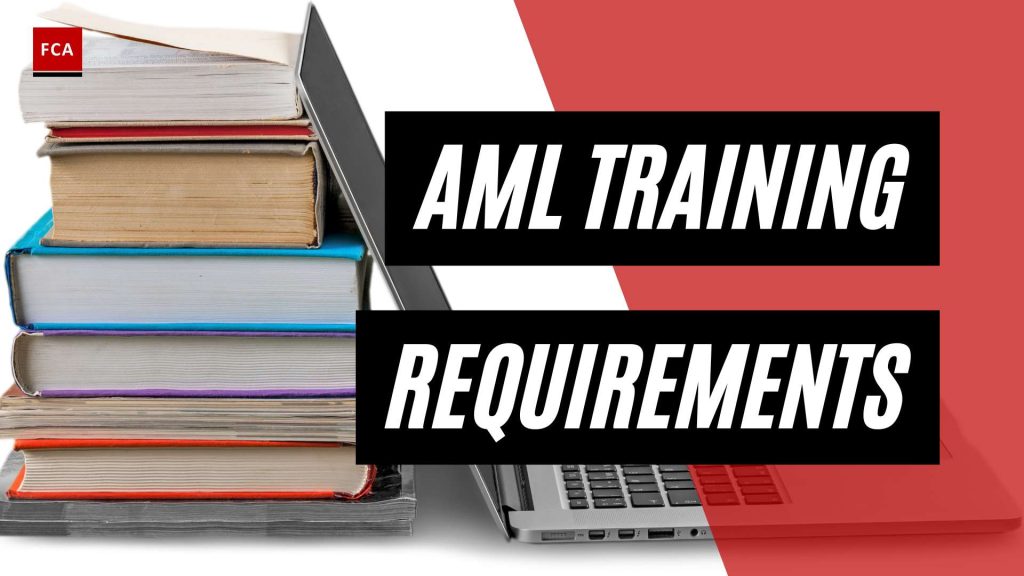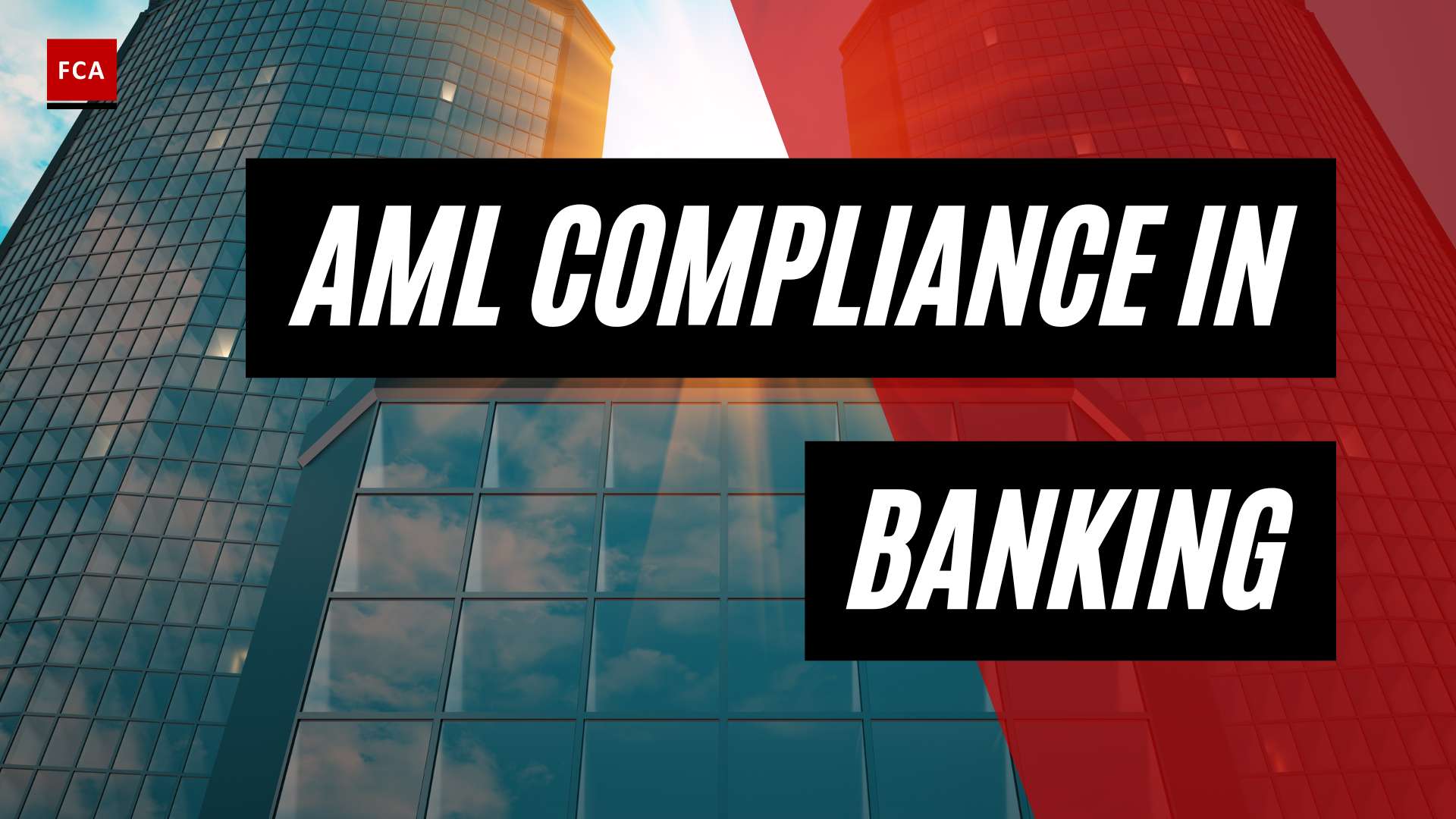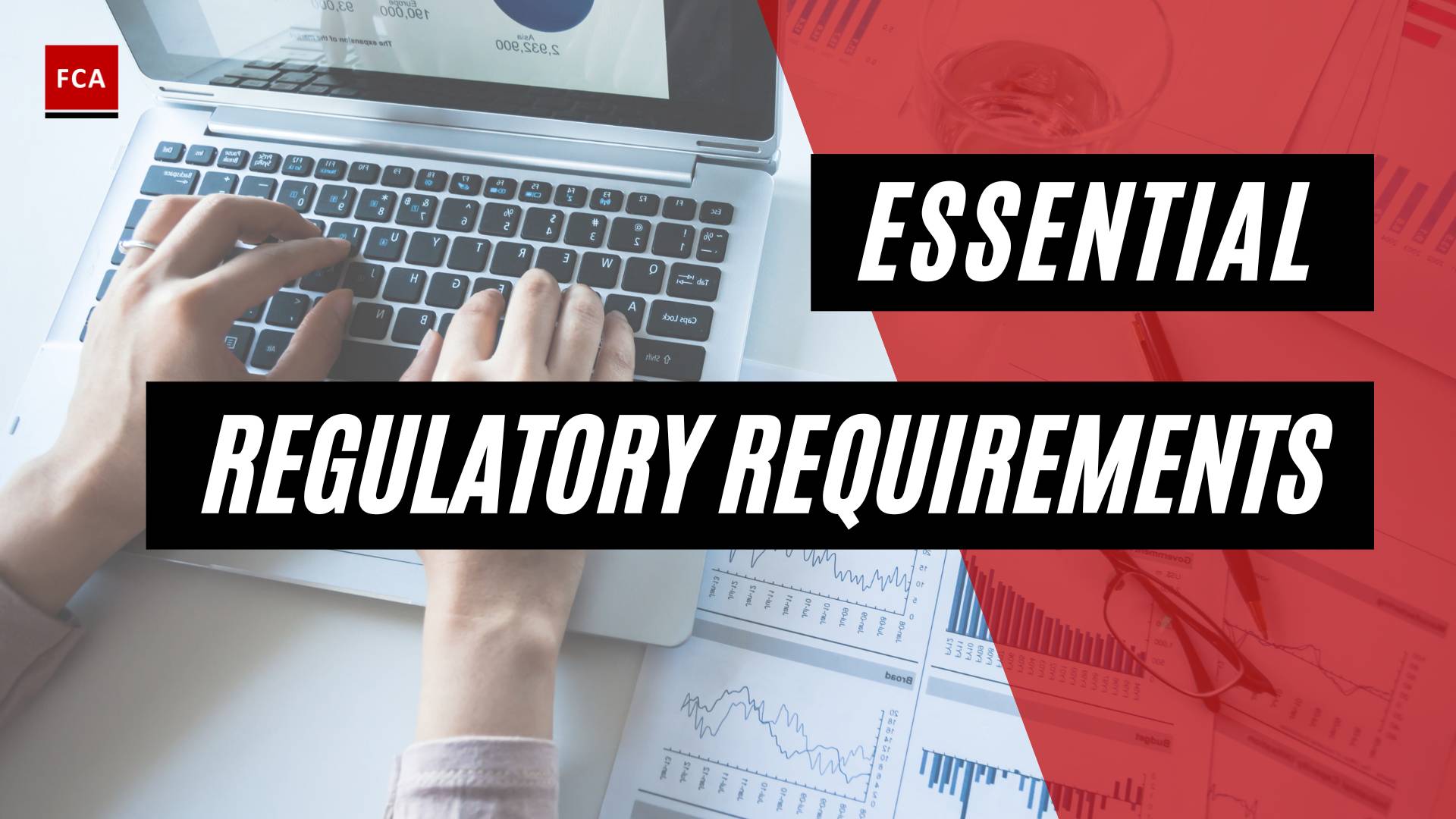The Importance of AML Training
In the realm of anti-money laundering (AML) compliance, training plays a critical role in equipping professionals with the necessary knowledge and skills to identify and prevent illicit financial activities. AML training is not only essential for compliance with regulatory requirements but also serves as a proactive measure to safeguard the integrity of financial institutions and the broader financial system.
Role of Training in AML Compliance
AML training is a fundamental component of an effective compliance program. It ensures that individuals working in roles related to compliance, risk management, anti-money laundering, and anti-financial crime are well-versed in the latest regulations, best practices, and techniques for combating money laundering.
Professionals who undergo comprehensive AML training gain a deeper understanding of the red flags and indicators associated with money laundering activities. They learn how to identify suspicious transactions, conduct enhanced due diligence, and report any potential illicit activities to the appropriate authorities.
By providing employees with the knowledge and tools necessary to combat money laundering, AML training contributes to the overall risk management framework of financial institutions. It helps mitigate the potential reputational, financial, and legal risks associated with money laundering, ensuring the institution remains compliant with relevant laws and regulations.
Consequences of Inadequate Training
Inadequate AML training can have severe consequences for financial institutions. Compliance failures in the AML field can result in substantial fines, penalties, and legal implications. The fines for non-compliance can reach millions or even billions of dollars, as observed in various high-profile cases. Such penalties highlight the importance of rigorous training requirements to mitigate the risk of compliance failures.
Moreover, non-compliance can lead to reputational damage, loss of customer trust, and potential loss of business licenses. Financial institutions that fail to prioritize comprehensive AML training put themselves at a higher risk of being exploited by money launderers and facing regulatory consequences.
To avoid these detrimental outcomes, financial institutions must invest in robust AML training programs that keep their employees up-to-date with the latest regulatory changes, industry trends, and best practices in the field. Ongoing training and continuous learning are essential for AML professionals to effectively engage in identifying and preventing money laundering activities.
By prioritizing comprehensive AML training, financial institutions can demonstrate their commitment to compliance and contribute to the collective efforts in combating money laundering and protecting the integrity of the global financial system.
AML Training Requirements
To effectively combat money laundering and ensure compliance with anti-money laundering (AML) regulations, financial institutions and professionals are required to adhere to specific training requirements. These requirements encompass regulatory guidelines for training, the frequency of training, and the topics covered in AML training.
Regulatory Guidelines for Training
AML training requirements are established by regulatory bodies to ensure that individuals involved in financial transactions have a comprehensive understanding of money laundering risks, detection techniques, and reporting obligations. Financial institutions must comply with these guidelines to maintain a robust AML compliance program.
According to the Financial Industry Regulatory Authority (FINRA), registered representatives can fulfill their Continuing Education requirements through the FINRA portal. Other regulatory authorities, such as the Office of the Comptroller of the Currency (OCC) and the Financial Crimes Enforcement Network (FinCEN), also provide guidance on AML training requirements specific to their jurisdictions.
Frequency of AML Training
AML training should be conducted regularly to ensure that individuals stay abreast of the latest regulations, emerging trends, and best practices in money laundering prevention. Ongoing training is crucial for AML professionals to effectively engage in identifying and preventing money laundering activities. The Financial Crime Academy recommends conducting AML training at least annually and updating it to reflect changes in regulations, technology, and best practices in the financial crime prevention field (Financial Crime Academy).
Topics Covered in AML Training
AML training programs should cover a range of topics to provide individuals with the knowledge and skills necessary to fulfill their responsibilities in preventing money laundering. Key topics typically include:
- Recognizing suspicious activities
- Reporting requirements
- Customer due diligence procedures
- Understanding the importance of AML compliance in safeguarding the financial system
By covering these topics, individuals can develop a comprehensive understanding of their roles and responsibilities in identifying and preventing money laundering activities.
It is important to tailor AML training to specific job functions to ensure relevance and effectiveness. Training sessions should be interactive, engaging, and incorporate practical examples and real-life case studies to enhance comprehension and application of AML principles. Regular testing and assessments should also be conducted to evaluate the effectiveness of the training program and ensure ongoing competency in AML compliance.
By adhering to regulatory guidelines, conducting training at regular intervals, and covering essential topics, individuals and financial institutions can fulfill AML training requirements and strengthen their ability to detect and prevent money laundering activities.
Designing Effective AML Training Programs
To ensure the effectiveness of Anti-Money Laundering (AML) training programs, it is essential to design them in a way that meets the specific needs of the organization and its employees. Tailoring the training to job functions, utilizing interactive and engaging methods, and implementing regular testing and assessments are key components in achieving this goal.
Tailoring Training to Job Functions
AML training should be customized to the different job functions within an organization. Each role may have unique responsibilities and risks associated with money laundering and financial crime prevention. By tailoring the training content to specific job functions, employees can better understand their roles and responsibilities in identifying and reporting suspicious activities.
For example, employees in customer-facing roles may require training on recognizing red flags and conducting enhanced due diligence, while those in senior management positions may need training on AML regulatory requirements and oversight of the compliance program. By aligning the training with job functions, employees can develop the necessary skills and knowledge to effectively contribute to the organization’s AML efforts.
Interactive and Engaging Training Methods
Engagement is key to effective learning. AML training programs should incorporate interactive and engaging methods to enhance the learning experience and promote knowledge retention. This can include case studies, scenarios, role-playing exercises, and group discussions.
By utilizing these methods, employees can apply their learning to real-world situations, improving their ability to identify and mitigate potential money laundering risks. Additionally, incorporating technology such as AML training videos can provide visual and interactive elements to enhance engagement.
Regular Testing and Assessments
Regular testing and assessments are vital to measure the effectiveness of AML training programs and ensure that employees have acquired the necessary knowledge and skills. These assessments can take the form of quizzes, exams, or practical exercises, allowing employees to demonstrate their understanding of AML concepts and their ability to apply them in practice.
By conducting regular testing and assessments, organizations can identify any knowledge gaps and provide targeted remedial training as needed. This iterative process helps to reinforce learning and ensure that employees remain up to date with evolving AML regulations and best practices.
By tailoring training to job functions, utilizing interactive and engaging methods, and implementing regular testing and assessments, organizations can design effective AML training programs. These programs enhance employees’ understanding of their responsibilities in AML compliance, foster a culture of vigilance against money laundering, and contribute to the overall effectiveness of the organization’s AML compliance program.
Components of an AML Compliance Program
To establish a robust and effective anti-money laundering (AML) compliance program, organizations must incorporate several key components. These components work together to mitigate the risks associated with money laundering and ensure regulatory compliance. The three essential components of an AML compliance program are:
Risk Assessment
Conducting a comprehensive risk assessment is the foundation of any successful AML compliance program. This assessment involves identifying and analyzing the potential money laundering risks associated with the institution’s customers, products, services, and geographical locations. By understanding these risks, organizations can tailor their AML strategies accordingly (KYC2020).
A thorough risk assessment enables organizations to prioritize their resources and implement appropriate measures to detect and prevent money laundering activities. It helps identify high-risk areas and allows for the implementation of risk-based controls and monitoring protocols. Regularly reviewing and updating the risk assessment is crucial to adapt to evolving threats and regulatory changes.
Written Policies and Procedures
Developing clear and concise written policies and procedures is vital for effective AML compliance. These documents serve as a guide for employees and outline the institution’s commitment to AML compliance. They should define the responsibilities of employees, specify the processes for identifying and reporting suspicious activities, and establish protocols for customer due diligence and record-keeping.
Written policies and procedures should be regularly reviewed and updated to align with evolving regulatory requirements and emerging risks. They should be easily accessible to all employees and provide clear instructions on AML compliance obligations. Having well-documented policies and procedures helps ensure consistency in AML practices and facilitates internal and external audits.
Employee Education and Training
Educating employees about AML regulations, procedures, and emerging risks is crucial for an effective AML compliance program. Regular training programs should be conducted to ensure employees stay updated with evolving threats and compliance requirements. Training should cover topics such as recognizing red flags of money laundering, understanding customer due diligence procedures, and reporting suspicious activities.
By providing comprehensive training, organizations can foster a culture of vigilance and empower employees to play an active role in preventing money laundering. Training should be tailored to different job functions, taking into account the specific AML risks and responsibilities associated with each role. Ongoing training and refresher courses are essential to reinforce knowledge and keep employees informed about the latest AML trends and regulatory changes.
By incorporating these components into their AML compliance programs, organizations can establish a strong framework to detect, prevent, and report instances of money laundering. It is important to note that compliance requirements may vary based on jurisdiction and industry, so organizations should ensure they stay up-to-date with relevant regulations and guidance.
For professionals seeking AML training programs, certifications, and resources, we offer a variety of options, including AML training courses, AML training online, and AML training materials.
Legal Framework for AML Compliance
When it comes to Anti-Money Laundering (AML) compliance, there are several key pieces of legislation that form the legal framework in the United States. These laws aim to combat money laundering, terrorist financing, and other illicit financial activities. Understanding the legal requirements is essential for organizations and individuals involved in AML training and compliance.
Bank Secrecy Act (BSA)
The Bank Secrecy Act (BSA) is the primary legal apparatus for the enforcement of AML norms in the United States. Administered by the U.S. Department of the Treasury’s Financial Crimes Enforcement Network (FinCEN), the BSA imposes various obligations on designated financial institutions. These obligations include keeping accurate records of cash purchases and negotiable instruments, filing reports of cash transactions exceeding $10,000 per day in the aggregate, and reporting suspicious activity that might involve money laundering, tax evasion, or other illicit finance. The BSA plays a crucial role in preventing and detecting financial crimes.
USA PATRIOT Act
The USA PATRIOT Act of 2001 introduced additional requirements on certain financial institutions to enhance AML efforts. This act was enacted in response to the September 11, 2001 terrorist attacks and aimed to strengthen the government’s ability to combat terrorism and protect the financial system from abuse. The USA PATRIOT Act imposed more detailed due diligence efforts on financial institutions and mandated the implementation of programs to verify customer identity. These measures were designed to enhance the detection and prevention of money laundering and terrorist financing activities.
Anti-Money Laundering Act of 2020 (AMLA 2020)
The Anti-Money Laundering Act of 2020 (AMLA 2020) introduced significant reforms to the AML and Combating the Financing of Terrorism (CFT) regime in the United States. This legislation expanded the scope of AML/CFT efforts by establishing a national beneficial ownership database, which enhances transparency and helps identify the individuals behind legal entities. Furthermore, the AMLA 2020 extended the coverage of the BSA to encompass virtual currencies and antiquities, which are often used to facilitate illicit financial activities. The act also enhanced civil and criminal penalties for repeat and egregious violators, strengthening the enforcement and deterrence mechanisms against money laundering and related offenses (source).
Understanding the legal framework provided by the Bank Secrecy Act, USA PATRIOT Act, and Anti-Money Laundering Act of 2020 is crucial for organizations and individuals involved in AML training and compliance. These laws set the foundation for regulatory requirements and expectations, shaping the landscape of AML efforts in the United States. By staying informed and adhering to these legal obligations, organizations can contribute to the fight against money laundering and help maintain the integrity of the financial system.
Best Practices for AML Training
When it comes to AML training, it’s important to follow best practices to ensure the effectiveness of the training programs and compliance with regulatory requirements. Here are some key best practices to consider:
Ongoing Training and Refreshers
AML professionals should undergo periodic training to stay up-to-date with the latest regulations and compliance standards. Ongoing training is crucial for effectively engaging in identifying and preventing money laundering activities. Training should be conducted regularly, at least annually, and updated to reflect changes in regulations, technology, and best practices in the financial crime prevention field. This ensures that employees are equipped with the knowledge and skills necessary to combat emerging money laundering risks.
Role-Specific Training
To ensure that employees understand their roles and responsibilities in preventing money laundering activities, AML training should be tailored to specific job functions. Different roles within an organization may have varying levels of exposure to money laundering risks. Providing role-specific training allows employees to focus on the areas most relevant to their daily activities and enhances their ability to identify and report suspicious transactions. For example, accountants may receive specialized training on detecting money laundering red flags specific to financial transactions.
Documentation and Record-Keeping
Proper documentation and record-keeping are essential components of an effective AML training program. Financial institutions should maintain records that demonstrate compliance with training requirements. This includes keeping records of training sessions conducted, attendance records, training materials used, and any assessments or tests administered. Documentation serves as evidence of a robust training program and can be important in demonstrating compliance during regulatory examinations or audits. It also helps track employee progress and identify areas that may require additional training (Financial Crime Academy).
By adhering to these best practices, organizations can ensure that their AML training programs are effective, up-to-date, and aligned with regulatory expectations. Ongoing training and refreshers, role-specific training, and proper documentation are key elements in building a strong AML compliance culture and mitigating the risks associated with money laundering activities. Remember, non-compliance with AML training requirements can lead to severe consequences, including monetary fines, legal implications, reputational damage, and potential loss of business licenses. Stay proactive and prioritize AML training to protect your organization and combat financial crime effectively.








